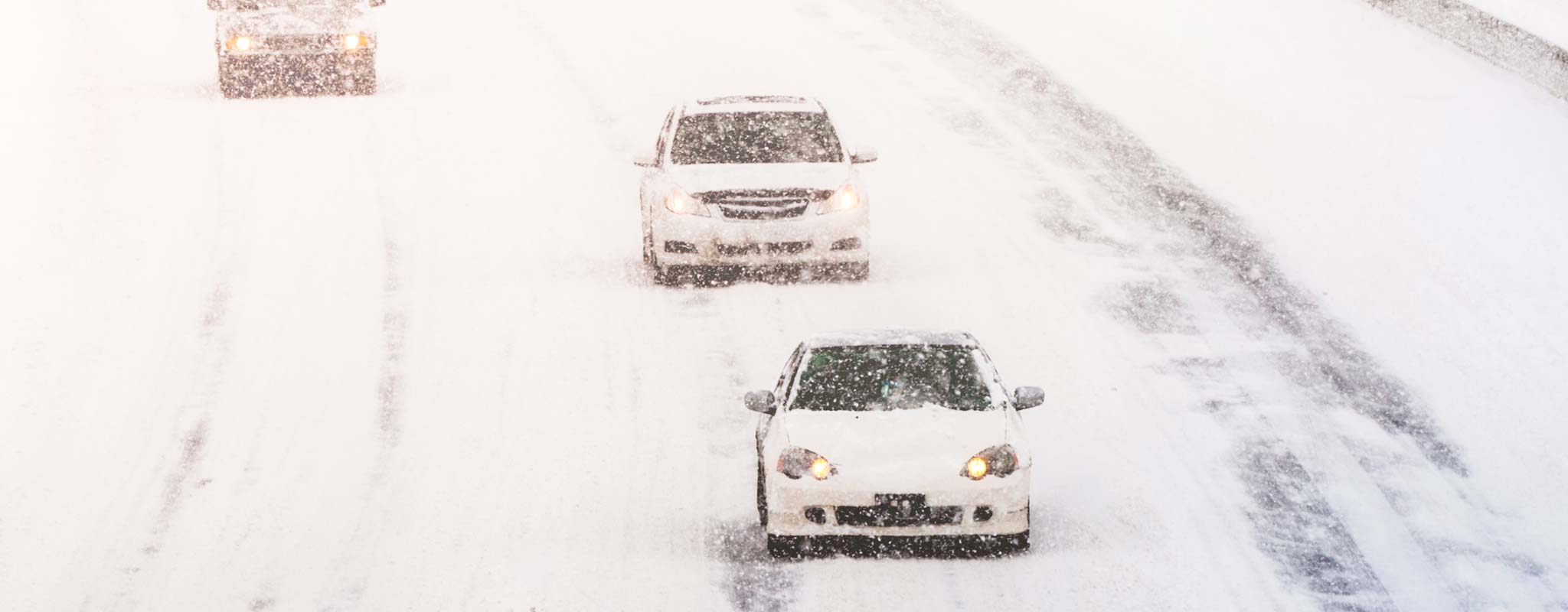Does Adding Weight in the Back Improve My Car’s Traction in Snow?
Should you add weight in your trunk or the bed of your pickup to improve winter traction? For best traction you want a greater percentage of the vehicle’s weight centered over the drive wheels, the wheels where the engine sends the power to propel the car. Basically:
- Do add weight in the back of a rear-wheel-drive vehicle
- Don’t add weight to the back of a front-wheel-drive vehicle
- Don’t add weight in the back of an all-wheel-drive vehicle
- Consider adding weight to the back of a 4WD in some circumstances
Here are the details.
Weight in the Back Helps for RWDs
Pickups
When there’s snow on the road and you’re finding that you don’t have enough traction to get up hills, you fishtail going around curves or your tires spin when you put your vehicle into gear with only light pressure on the gas, it’s a sign that you could use more weight.
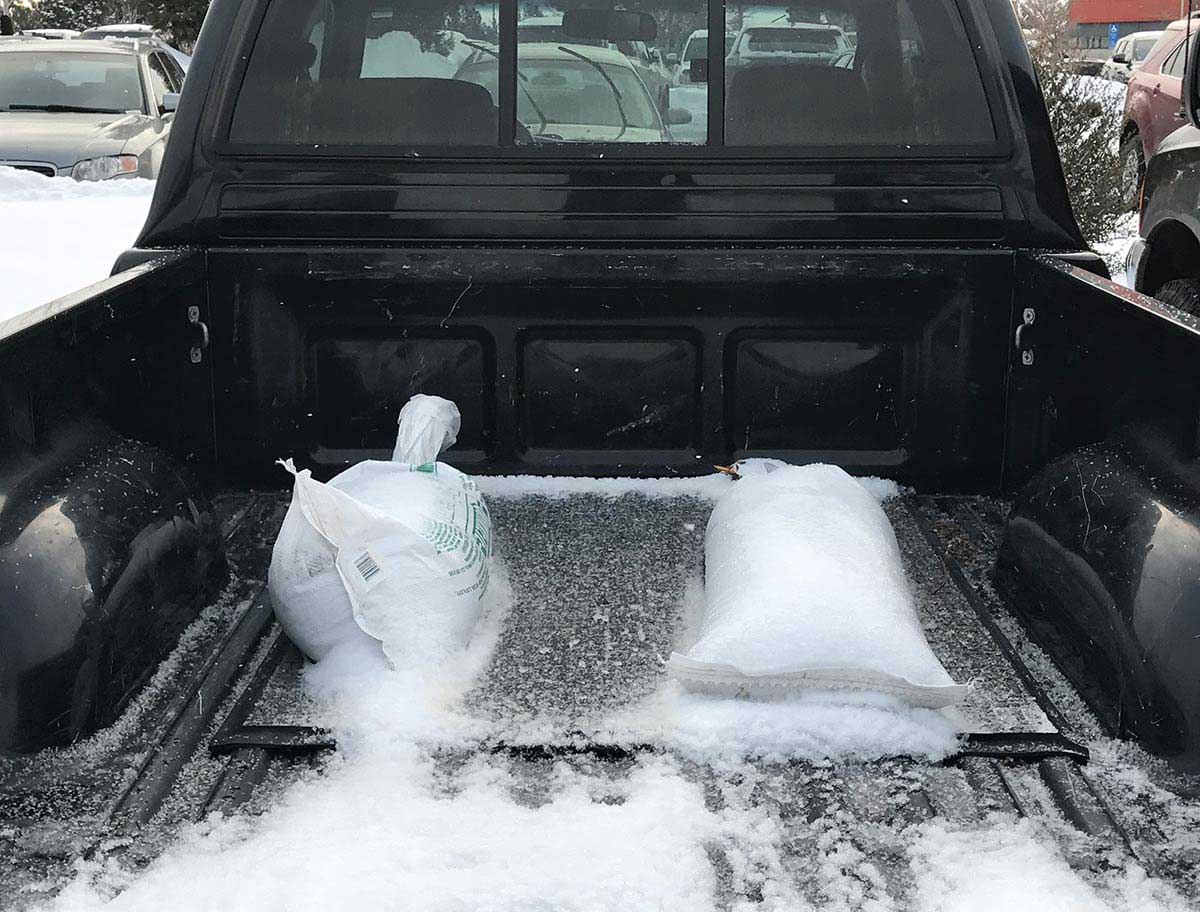
A pickup truck is built to carry cargo, but today lots of truck drivers don’t routinely haul anything in their beds. An empty cargo bed means some of the weight the truck was designed to carry on the rear axle for balanced handling is missing and you’re getting less than ideal traction from the rear wheels. It’s a good thing to add extra mass.
Other RWD Vehicles
A rear-wheel drive car or SUV has a nearly even weight balance between front and back, with each tire carrying about an equal share of the vehicle’s load. Placing some weight in the trunk over the rear axle may help a bit with snow traction, but not if you have a car fully loaded with gear and people in back. In that instance, you’ve already got a greater percentage of weight over the drive wheels and you don’t need to add anything else.
How Much Weight?
Figuring out the right weight to carry could take a bit of trial and error to see what works best for your vehicle and driving. Below are general rules of thumb.
Of course, never add more payload than the safe weight limit listed in your owner’s manual under “standard” and “maximum” vehicle payloads.
| Type of Vehicle | Suggested Added Weight |
|---|---|
| ½-ton pickup | 240-300 lbs. |
| ¾- to 1-ton pickup | 300-400 lbs. |
| Sedan/SUV/CUV | 100 lbs. |
Will the Added Weight Make It Harder to Stop?
It may seem intuitive that a heavier car will mean longer stopping distance, due to added momentum. Not necessarily.
The added mass (no more than a few hundred pounds) isn’t enough to make a significant difference in braking. The weight flattens out the tires, increasing the size of the contact patch, the area where the rubber meets the road. The tires become less round and have more gripping surface, which helps a vehicle slow down faster.
Best Materials to Use
Tube-shaped sandbags are the most popular. They come in 60- to 70-pound bags at about $5 a pop at home improvement and hardware stores.
Besides sand, common materials for weight are drainage gravel, potting soil, cat litter and rock salt. You can sprinkle any of these on the ground for traction if you ever get stuck in snow. Dump soil in the garden come spring for new plantings.
Some pickup drivers leave their fifth wheel hitches in the bed during winter, which can add roughly 250 pounds.
There are also reusable, water-bladder traction aids for all types of vehicles that range in price from $70-200.
Even just keeping a full gas tank can help. A filled 16-gallon tank can add over 100 pounds.
Other considerations:
- Plastic mesh, burlap and plastic bags will start to disintegrate over the course of a winter. You risk rust if the material in the bag collects moisture then leaks and comes in contact with metal. Buy double-wrapped bags to prevent this. You’ll also potentially extend the life of the weight to several seasons.
- DON’T just let a truck bed fill up with snow to provide weight: When you’re driving it will fly out behind you, causing visibility problems for following vehicles.
- DON’T use cement blocks or railroad ties, which could become dangerous projectiles in a wreck.
- If the roads are usually dry with only occasional slick winter conditions, you can just add weights when there’s weather, and keep the bags stored when not, for best gas mileage.
Where Should I Put It?
Sandbags should be centered over the rear axle, or as close to it as possible. This means in the trunk or cargo area as close to the rear wheels as you can in RWD cars and SUVs and right next to the wheel wells in a pickup. It’s not a good idea to wedge the weight by the pickup tailgate, since this could lighten the front end too much, causing handling instability.
Added Weight Won’t Help Traction for FWD or AWD Vehicles
In a front-wheel drive, about 65 percent of the weight of the engine is over the front axle. This is a good thing for snow traction. The weight flattens the shape of the front tires a bit, even if they have the same tire pressure as the rear. This increases the friction between the road and the tires on the wheels that are responsible for moving the car. More friction means more road grip.
Adding weight to the trunk could actually cause problems with FWD cars, especially if you’ve got the whole family and luggage loaded. A lot more weight in the rear can create a teeter-totter effect, with the back weight making the front comparatively too light for proper grip.
More weight won’t improve traction for all-wheel-drive vehicles either. If slipping or skidding is detected, 90 percent or more of an AWD engine’s power will be sent to whichever wheels have tires that are getting better grip. If there’s more weight in the rear, it could lighten the front too much, causing less traction there. The engine could compensate by sending more power to those wheels, which could cause them to spin.
Plus, AWD adds significant weight to some models of cars, which also helps with traction.
Do I Need Weight in the Back for My 4WD? Maybe.
Automatic transmission four-wheel drive vehicles do well on winter traction without extra weight, so long as the tire tread is in good condition. If you have a manual transmission, if you’re driving a lot in icy conditions or on hills, or if you’re spinning out even when only lightly hitting the gas, some weight in the back may still help.
Having the Right Tires Matters More
Tires in good condition are a much more important factor than weight for starting, cornering, accelerating and stopping in snow. Tires without enough tread will spin or skid on snow whether you have additional weight in the rear or not. Even if you have an AWD or automatic 4WD vehicle you won’t have safe traction if you’ve got worn tires.
But if you have good tires and are driving a RWD car or SUV, a pickup truck or a manual 4WD vehicle, adding sandbags to the back can give you some additional traction in winter conditions.
See our winter driving resource list for more tips on making it safely through the season.
Get More Winter Tips
What you need to know
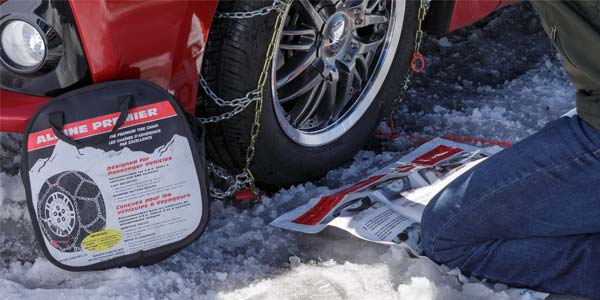
How to: Put on Snow Chains and Drive Safely
Step-by-step instructions and a video for putting on and driving safely with snow chains.
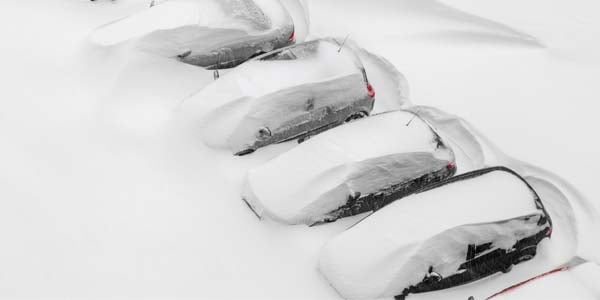
7 Things To Do When Your Car is Stuck in Snow
A blizzard is on the way. Do you know how to get your car out of the snow if you get stuck?
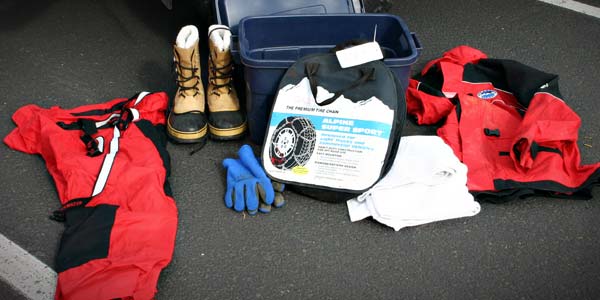
14 Items to Put in Your Winter Road Trip Safety Kit
Now’s the time to get road-ready for the snowy months with a winter road trip safety kit. Here’s what should be in it.

